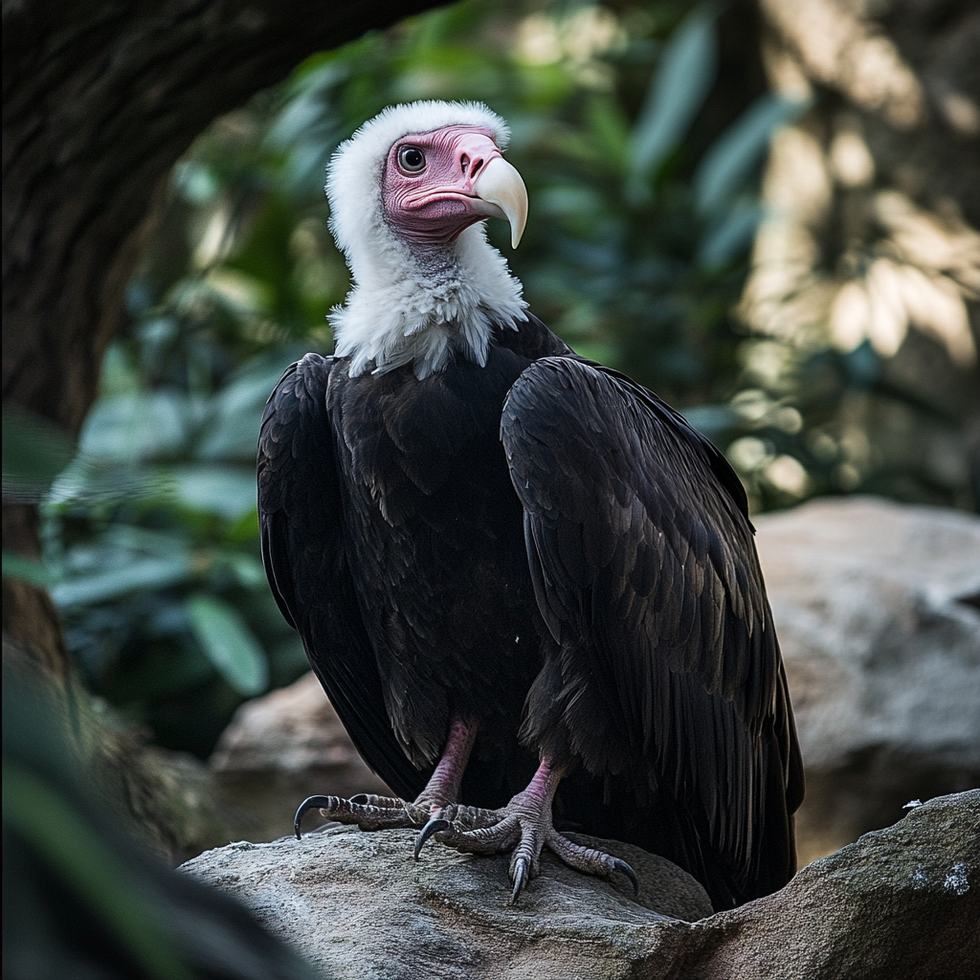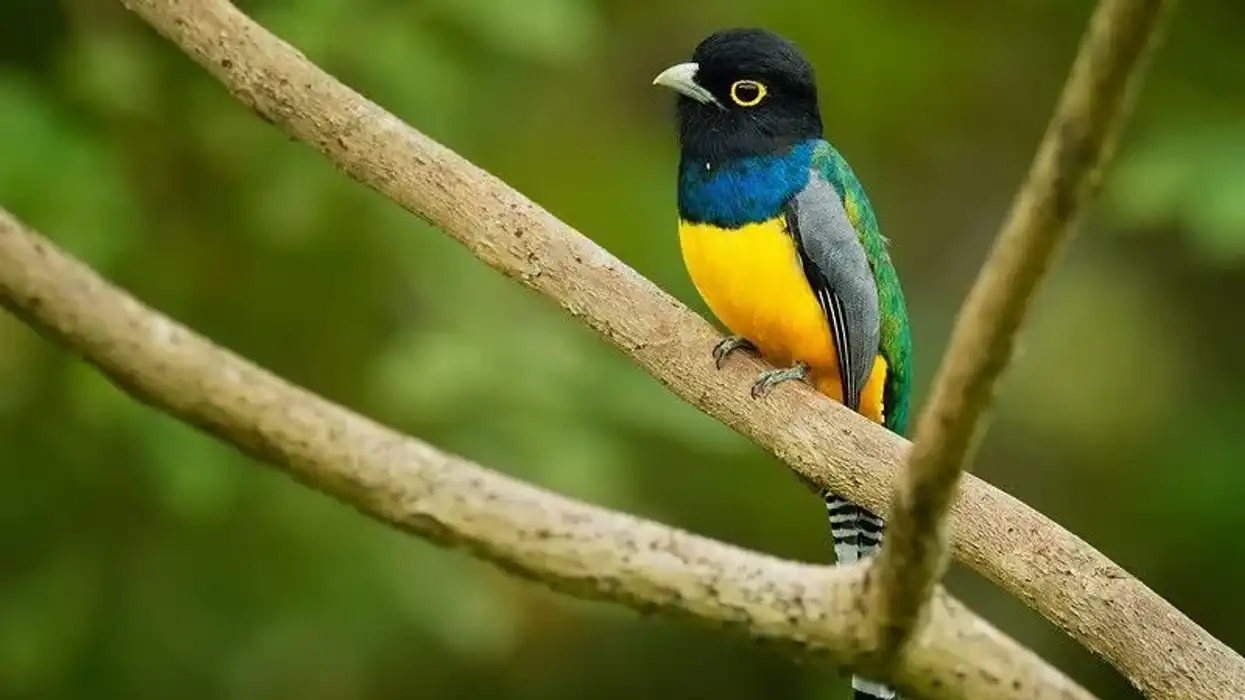The white-headed vulture (Trigonoceps occipitalis) is one of the medium-sized vulture species, endemically found in the continent of Africa.
These carnivorous bird species are found in the Sub-Saharan scrublands, the dry forests, and the semi-arid regions of the countries like Somalia, Senegal, Kenya, Ethiopia, Botswana, among others. These species of birds belong to the group of scavenger birds of the world, but this particular species of vultures also hunt for little prey animals, like snakes and lizards.
The white-headed vulture has a wide range of colors like dark brown, white, and black with tints of orange and pink in specific portions; the bird's legs are white in color.
The birdlife international researchers and the IUCN red list have declared this species of vultures as a Critically Endangered species due to their increasingly declining population. These bird species are being taken care of in the protected areas by the concerned conservationists.
There is even more information about the other species waiting to be discovered so take a look at our bearded vulture and Himalayan vulture facts.
White-headed Vulture Interesting Facts
What type of animal is a white-headed vulture?
A white-headed vulture (Trigonoceps occipitalis) species from the Accipitridae family is a medium-sized bird. These native bird species of Africa are carnivorous scavengers and are dark brown colored with a white head as their name suggests.
What class of animal does a white-headed vulture belong to?
The white-headed vulture (Trigonoceps occipitalis) species belongs to the class of Aves.
How many white-headed vultures are there in the world?
There are about 2,500-10,000 white-headed vultures in the world and are endemically found in the continent of Africa.
Where does a white-headed vulture live?
A white-headed vulture lives in the semi-arid regions of Africa. These species of vulture are found to inhabit the dry forests and scrublands of the sub-Saharan deserts of the continent. This species of vultures are endemic to African countries like Somalia, Senegal, Kenya, Ethiopia, Botswana, among others.
What is a white-headed vulture's habitat?
A white-headed vulture habitat stretches from the western to the eastern part, as well as, the southern part of the continent of Africa. They inhabit the sub-Saharan scrublands, dry forests, and the semi-arid regions of the continent; these birds build their nests in the tall trees like baobabs and acacias.
Who do white-headed vultures live with?
The white-headed vultures are mainly reclusive in nature, living in couplets, although they can be found feeding and meander in wakes.
How long does a white-headed vulture live?
The average lifespan of a vulture is about 20 years; the species of vultures are considered to live for a long period of time without any human interference, however, any precise information about the life span of this species is yet to be recorded and documented.
How do they reproduce?
The vultures of this species build their nests in trees like baobabs and acacias. These birds of this species exhibit reversed sexual dimorphism.
The male birds are comparatively smaller in size than the female birds. The incubation period of this species is about a month and a half; the female bird lays a single egg that is grayish in color with patches of brown.
What is their conservation status?
The species of the white-headed vultures are Critically Endangered according to the IUCN Red List. The threatening decline in the population of this species is due to certain factors like bird trading for medicinal purposes, loss of habitat, and poisoning among others.
White-headed Vulture Fun Facts
What do white-headed vultures look like?
The birds of this species have dark brown feathers on their plumage and upper back and a black tail. They have impressive median wing tectrices, a white tuft along with a pink hooked beak, a pair of pale orange eyes, and a white throat. The vulture's legs are white and bare.
How cute are they?
Vultures are generally considered to be ugly, especially because of their weird-looking physique and their nature of scavenging dead creatures; however, this species of vulture also hunt for prey, and even if they are not really considered to be really cute according to the conventional ideas of beauty, yet they play a really crucial role in cleaning up the earth by scavenging the dead and rotten creatures.
How do they communicate?
These birds are mainly silent in nature, however, they produce prominent scraping sounds during interactions during the mating season.
How big is a white-headed vulture?
A white-headed vulture size itself among the medium-size vultures and measures about 28-33.5 in (72-85 cm) in length and has a weight range of 9-10 lb (4-4.7 kg). The bird is about the same size as the black vulture.
How fast can a white-headed vulture fly?
A vulture can fly high in the sky for longer periods, however, a white-headed vulture flies at lower heights while spotting grounds for scavenging carcass.
How much does a white-headed vulture weigh?
A white-headed vulture has a weight range of 9-10 lb (4-4.7 kg).
What are their male and female names of the species?
There has been no specific name individually assigned for the male and female of this species.
What would you call a baby white-headed vulture?
A baby or a juvenile of this species lacks a specific name.
What do they eat?
The birds of the species of the white-headed vulture diet a wide range of food. Although these birds are primarily carnivorous scavengers, they do not depend solely on the carcass for their food, these birds also hunt for small prey creatures like lizards, snakes, insects, termites, locusts, and fish among others.
Are they dangerous?
Vultures are primarily scavengers and do not intentionally attack humans if not insisted on doing so by harming them.
Would they make a good pet?
Vultures are wild birds and prefer to live in the wild without any human interference, serving a crucial role in cleaning up the environment by scavenging, and they are unlikely to be considered good pets.
Did you know...
A white-headed vulture, being native to the old world lands, belongs to the subfamily of Aegyptiinae that also includes hawks and eagles. These species are the early birds at the carcass grounds due to their low flights and extensive binocular field of vision.
How many species of vultures are there?
There are about 23 species of vultures all over the world. Unlike the largest black vultures, the white-headed species has a white tuft. The Egyptian vulture species are among the smallest species of vultures.
Naming white-headed vulture
The white-headed vulture has a white tuft on their head which makes them easily distinguishable from the other species of vultures and earns them their name.
Here at Kidadl, we have carefully created lots of interesting family-friendly animal facts for everyone to discover! For more relatable content, check out these greater yellow-headed vulture facts and white-backed vulture facts pages.
You can even occupy yourself at home by coloring in one of our free printable bird coloring pages.
Second image by Luc Viatour.










